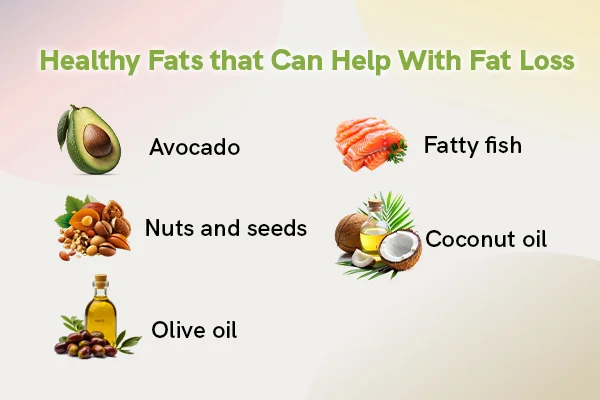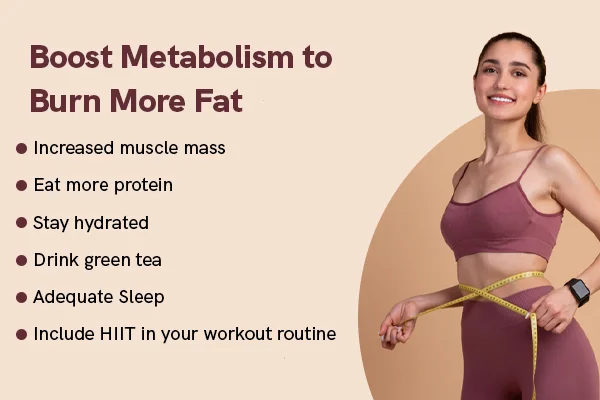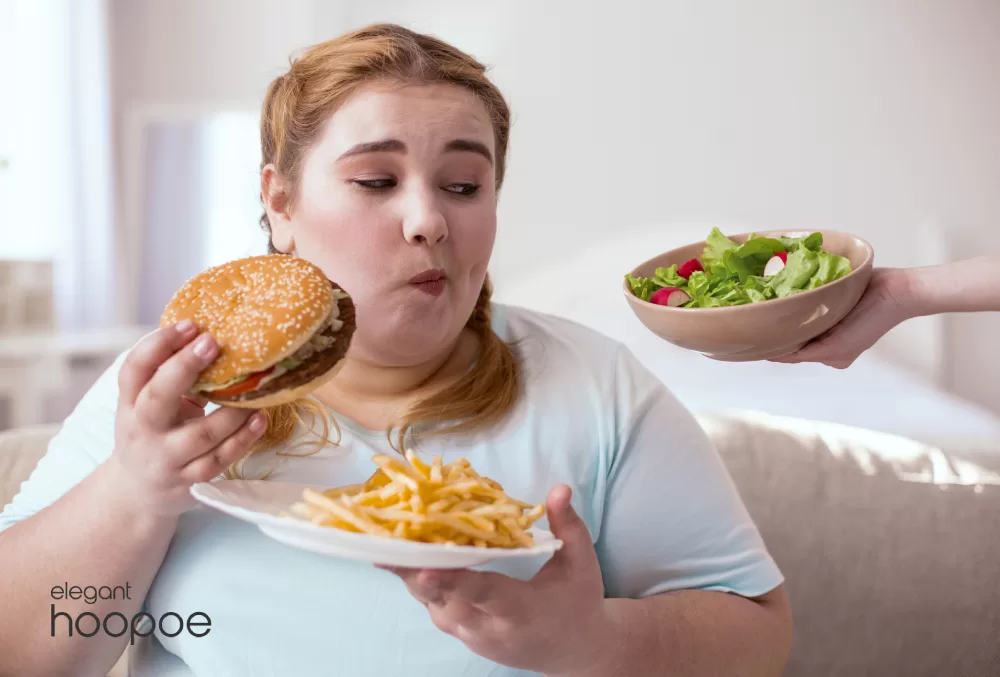What Are the Best Ways to Melt Fat Fast?
Want to melt fat fast? The key lies in a strategic mix of diet, exercise, and metabolism-boosting habits. Here’s how:
- Create a Caloric Deficit – Burn more calories than you consume through balanced meals and portion control.
- Exercise Smart – Combine strength training and cardio (HIIT, running, swimming) for optimal fat burning.
- Boost Metabolism – Build muscle, eat protein, stay hydrated, and get enough sleep.
- Avoid Quick Fixes – Fad diets may promise results, but sustainable weight loss comes from long-term lifestyle changes.
By focusing on these science-backed strategies, you can effectively melt fat and maintain a healthier body.
Have you ever felt unsatisfied with your current weight and were wondering how to burn belly fat fast? Anyone who has considered this and seriously burned fat knows that there is no such thing as a magical solution that will do the work in a flash. However, a few particular tricks and tactics joined together with a bit of work may serve to answer the issue of how to melt fat fast.
The most common method for burning fat fast is to have a combination of exercise and proper diet. If you take up eating whole foods and try to manage your calorie in-take while adding some exercise to the mix, you would be able to create a calorie deficit which will translate to body fat reduction over time. Cardiovascular exercises that boost metabolism, will increase muscle mass and promote fat burning, when combined with strength training.

Knowing the science behind burning fat, building a sustainable lifestyle, and keeping a positive attitude through your weight loss journey are also key things to take into account. In this article from elegant hoopoe, we will focus on some of the most effective ways to burn fat fast, including a balanced diet for fat loss, exercise routines, tips for boosting your metabolism, and other strategies that can help you achieve your goals and improve your overall health.
Fat Burning Process
Fat burning which means using stored fat for energy is a complicated procedure that needs the cooperation of various hormones, enzymes, and metabolic pathways. When you eat more than your body needs, the extra calories are stored in the fat cells. To reduce the amount of fat in your body, you have to create a calorie deficit, which can be accomplished either by decreasing the calorie intake through diet, or by increasing the calorie expenditure through exercise.
When your body is in need of energy, it first of all turns to glucose, or blood sugar, for fuel. And if the glucose level is low, the body takes advantage of the stored fat and converts it into energy through the lipolysis process. Ketone bodies, which the liver produces from fatty acids released from fat cells, reduce fat storage. The brain and other organs then use these ketone bodies for energy.
Understanding the Complexities of Fat Burning
Although lipolysis can be defined as the main reason for fat burning, it is necessary to mention that this process is subject to the regulation of different hormones, namely insulin, glucagon, and cortisol. These hormones are influenced by diet, exercise, stress, and sleep, which, in time, have an effect on the speed of burning fat. Moreover, genetics as well as individual metabolic rates can determine the pace at which fat is burned, thus it is necessary to find a sustainable fat loss plan that is appropriate for you and your lifestyle.
Stubborn belly fat is very often the source of the frustration and the struggle for many people who find it hard to lose weight even with diet and exercise. Nevertheless, some people will not be inclined toward surgery in view of the fact that their bodies are already naturally attractive. In fact, non-surgical fat removal from the stomach is certainly a helping hand in targeting the excess fat found in the stomach region.
How to Melt Fat Fast with an Effective Diet?
Having a healthy diet is necessary to lose the fat you want. In order for this to happen, it is important to consume fewer calories than you burn thus, creating a caloric deficit and enabling weight loss. Yet, extreme food deprivation is not viewed as being healthy and safe and could be the cause of the metabolic slowdown and the burning of muscle mass to compensate for this.
A targeted balanced diet involving various nutrient-rich foods can promote weight loss. Moreover, it will lead to the improvement of overall health. Set your priorities on the intake of varied foods such as lean protein sources, complex carbohydrates, healthy fats, and fiber-rich fruit and vegetables. Besides this, it is worth noting that processed and high-sugar foods need to be avoided because they can cause blood sugar imbalances, inflammation, and weight gain.
As an alternative, consuming whole foods that have not been processed, and are high in fiber, will make you feel full, and will give you the necessary vitamins and minerals to help you with your weight loss program. Healthy eating habits like meal planning and being aware while eating would help you adhere to your fat loss goals and would also ensure you to promote sustainable weight loss.
Healthy Fats that Can Help With Fat Loss

How to melt fat fast? Contrary to popular belief, there are some healthy fats that can be beneficial for your body. And having unsaturated fatty acids in your meals can be supportive for fat burning. The following are some of the good fats that can help in fat loss:
- Avocado: Avocados are a good type of healthy fat, plus they provide fiber and vitamins. The monounsaturated acids of avocados have been shown to reduce belly fat.
- Nuts and seeds: Nuts and seeds are loaded with good fats besides protein and dietary fiber. They can help control your appetite – at least to some extent, which can lead to successful weight management of course.
- Olive oil: Olive oil is the key to monounsaturated fat. It has been proven to help with inflammation and insulin sensitivity.
- Fatty fish: Fish which are rich in fats such as tuna, salmon, and sardines are high in omega-3 fatty acids, which are the elements that have been proven to be effective in lowering inflammation and strengthening heart health.
- Coconut oil: Coconut oil is the best supplier of medium-chain triglycerides (MCTs) which are known for their power to increase metabolism and thus lead you to burn fat fast.

Healthy fats can be helpful in losing fat, but they are still a must to be consumed in moderation as part of your regular diet. On the other hand, saying no to unhealthy fats, trans fats, and saturated fats, which are responsible for heart diseases and other health issues, or keeping their consumption low, is also important.
What is fat and why is it important? Do you know that fat is a very important substance, which is present in our body in a very necessary way? It serves numerous purposes, such as serving as an energy reserve, providing protection for vital organs, and helping with the absorption of nutrients.
Related Article: What’s a low-GI diet?
Best Exercises to Burn Fat Faster

If you want to know how to melt fat fast, we must state the obvious that exercise is a fundamental element of every successful weight-reduction program. Although diet is an important factor in attaining the necessary calorie deficit, exercise is crucial for the burning of calories, increasing the metabolism, and building muscle mass.
Cardiovascular exercises, such as running, cycling, or swimming, are primarily intended for burning calories and losing weight. When you do cardio, the stored body fat will be used to produce energy, thereby lowering the body fat as a whole. Do at least 150 minutes of moderate-intensity cardio a week to get significant fat loss results.
Strength training is another ingredient in any fat loss program. Muscle mass is the thing that pushes metabolism up and as a result, the body burns more calories and reduces the amount of fat. Besides, the more muscles there are, the more likely your body will look toned and defined.
A well-developed muscle workout program can be compiled by combining compound exercises like deadlifts, lunges, and squats, and isolation exercises like bicep curls and triceps extension.
Although physical activity is one of the key ingredients to melt fat, it might not be enough on its own to achieve significant weight changes. To formulate long-lasting modifications to body composition, a balanced diet focused on a calorie deficit is surely essential. Overall, regular physical activity in fact increases general health and wellness, and so, it becomes easier to achieve your fat loss goals.
How to Burn Fat at Home? Burning fat can be done without a gym membership. Discover how to design a home exercise program that is targeted to fat loss and is convenient to fit into your regular activities.
Strength Training to Melt Fat
Strength training is an essential component of any effective fat-loss program. And here are some reasons:
- Builds muscle mass: Weight training is among the best methods to gain and keep muscle mass. Muscle is one of the types of metabolism active tissue which means it is burning calories even when the body is in rest mode, compared to fat. The greater your muscle mass, the more calories you burn during the entire day, even if you are not exercising.
- Increases metabolism: Strength training is proved to speed up the metabolism rate not only while exercising but also after that. This effect termed excess post-exercise oxygen consumption (EPOC) has the potential to burn calories for as long as 24-48 hours post-workout.
- Burns fat: Strength training has a great impact on fat loss through its own means but even better on its effectiveness when combined with diet and cardiovascular exercises.
- Improves insulin sensitivity: Strength training has been proved to act in the way of boosting insulin sensitivity, a fact that helps control blood sugar levels and minimize the risk of type 2 diabetes.
- Bone density development: Resistance training can help keep the necessary bone density which is the key for the overall health of the body, while also aiding the prevention of osteoporosis.
Strength training for fat loss, must be based on the compound exercises that work for the main muscle groups such as squats, deadlifts lunges, and push-ups. Make sure to do strength training at least 2-3 times a week, and slowly increase the amount of weight and the difficulty of your workouts over time. Strength training is usually not the sole reason for weight loss, but it can be a useful part of a healthy fat loss program.

Best Cardio Exercises for Fat Loss
Cardiovascular exercise, commonly referred to as “cardio,” is an effective method on how to melt fat. We have outlined some of the best cardio exercises below:
- Running/jogging: The burning of excess calories and enhancement of cardiovascular strength through running or jogging is great. Running or jogging can be done on a treadmill or outdoors.
- High-intensity interval training (HIIT): HIIT is a training style that involves short bursts of intensive work followed by a cool-down. Which, as we know, is very effective in burning fat and building muscle.
- Cycling: Cycling is a low-impact physical activity that can be carried out on a regular exercise bike or with an actual bike outdoors. It can be an effective way of burning off calories, as well as developing cardiovascular stamina.
- Swimming: Swimming is a low-impact exercise and therefore is a very good way to reduce weight and gain cardiovascular endurance. It is also great in the sense that it works on a number of muscle groups.
- Jumping rope: Jumping rope is an extreme workout that can be performed anywhere and with just a piece of equipment called jump rope. It is a fantastic way to lose weight while gaining cardiovascular endurance.

Choosing a fun cardio exercise is a crucial factor in sustaining motivation to stick to the exercise for a long period of time. For the best health advantages, devote at least 150 minutes of moderate-intensity cardio or 75 minutes of high-intensity cardio per week.
Burn Fat Exercises, get to know some of the best fat-burning exercises that will help you maximize calorie burn, boost metabolism, and tone your body. In both the living room and the gym, these exercises will help you lose weight.
Read more: What are the best weight loss exercises ? Comprehensive guide
Boost Metabolism to Burn More Fat

Metabolism boosting is one of the effective means of how to burn belly fat and how to lose weight in general. Below we have some tips on how to boost your metabolism for faster weight loss:
- Increased muscle mass: Muscles are not only a source of strength, but they also require more energy to maintain than fat. Therefore, strength training exercises can promote the burning of calories and increase your metabolism.
- Eat more protein: Protein is the most important macronutrient that requires a lot of energy for its metabolism compared to carbohydrates and fat. That is why protein-rich foods can help your metabolism throughout.
- Stay hydrated: Metabolism is boosted by water, therefore, it is recommended to add more water usage into your daily routine.
- Drink green tea: Green tea is one good source consisting of many antioxidants and catechins that can strengthen your metabolism.
- Adequate Sleep: If you have been sleeping less, this might be one of the reasons your metabolism is slow. So, make sure you get enough sleep every night.
- Include HIIT in your workout routine: High-intensity interval training (HIIT) is actually among the types of workout that can facilitate such faster metabolism and even allow you to burn more calories than usual for the rest of your activities.
Metabolism boosting is one of the ways in which weight loss can be achieved, but the truth is that for long-lasting effects one must concentrate on proper diet and exercise. How to melt fat fast? Discover proven methods and strategies for speeding up fat loss, from dietary adjustments to targeted exercise routines that help melt fat faster while keeping your metabolism in check.

The Truth About Fad Diets and Quick-Fix Fat Melting Solutions
Fad diets and quick-fix solutions may promise rapid weight loss, but they are often not sustainable or effective in the long term. Here are some truths about fad diets and quick-fix solutions:
- Extreme calorie restriction, which fad diets and quick fixes usually involve can lead to the deficiencies of nutrients, the loss of muscles and the decrease of metabolism. Thus, this may lead to a scenario where the person finds it more difficult to stick to their routine in the long term.
- Many of the fad diets and fast fixes available today completely exclude full food groups, such as carbohydrates or lipids, effectively eradicating entire food groups. This means that the body lacks adequate vital minerals and vitamins, which makes a balanced and nutritious diet challenging.
- They can be dangerous, Particularly those involving extreme calorie restriction, fasting, or supplements, which all make certain fad diets and fast-fix remedies to be harmful.
- Root cause of weight gain is not addressed, Fad diets and quick-fix solutions usually focus on rapid weight loss instead of treating weight gain at the root cause. This may not only make it harder to keep the lost weight for a long time but also cause you to have cycles of weight loss and gain.
- They are not sustainable, Fad diets and quick fixes are mostly short-term solutions that cannot be sustained for a longer period, and once you stop following them, you will slowly regain all the weight that you have lost.

After all of this we can safely state that there is no short fix for weight loss.Quick fat loss exercises are a set of physical activities that stimulate the metabolism and promote calorie burning, thereby, weight loss being the result of this process. But for long-term goals, the shift toward a more sustainable weight loss journey is accompanied by behavioral changes like having a balanced diet and taking regular exercise. Those methods of improvement, though initially it may take longer to see their results, are more likely to bring about lasting weight loss and better health outcomes.
How to Stay Motivated During Your Fat Loss Journey
We all know that staying motivated during a fat loss journey can be challenging, but some strategies can help, and we are going to review some of them here:
- Motivate yourself and keep your eye on the prize by setting goals that are both reasonable and attainable. Your objectives should be well-defined, quantifiable, and limited in duration.
- Track your progress: Documenting your progress helps you to visualize the path you have taken to achieve the goal and thus to continue with the effort to melt your body fat. You can achieve this by regular weigh-ins, you can also take measurements, and additionally make use of workout trackers.
- Rewarding yourself: Using a self-imposed reward system for achieving your success is not only a motivational tool but also a tool of concentration. Don’t forget to pamper yourself with a massage, a new workout outfit, or a night out with your friends.
- Partnering up for a workout: Your workout partner is a person who can help you keep to your exercise routine and even make it more fun for you. Look for someone in your family or among your friends who has similar fitness goals, and make a decision to work out together.
- Mix up your workouts: Repeating the same type of workout can contribute to boredom and the reduction of enthusiasm in a person. Alter the way you exercise by trying out new movements, increasing or decreasing the intensity and duration of your training, or opting for a fitness class.
- Stay optimistic and keep in mind that daily little actions, help you to get the desired end result.
Keep in mind that a path of fat loss is more like a marathon than a sprint. You should be patient and consistent in your efforts; also, you should give permanent lifestyle changes first priority over fads or short solutions.
How much weight can you realistically expect to lose? Establishing realistic health aims is necessary for sustainable development with respect to weight loss. Get to know factors that affect weight loss as well as how to accomplish a sustainable end without jeopardizing your health.
Related Article: 5 Simple Ways to Remove Belly Fat
Conclusion on How to Melt Fat
To melt fat, it is necessary to concentrate on developing a healthy way of life that consists of balanced eating, regular fitness, and stress regulation. A balanced diet containing whole, minimally processed foods, portion control, and hydration is indispensable for maintaining health during weight management. At least 30 minutes a day, 3-5 times a week of physical exercise can help burn fat and keep a stable weight. Proper nutrition and relaxation techniques such as meditation and deep breathing will also support a healthy weight.
The main point of the long-term fat loss process should be the consistency, as the success will come with time, so you should be patient, and committed, and celebrate your progress along the way. Are you ready to make a positive change to your body and achieve the body shape that you desire? Your weight loss journey will be guided by our Dubai center. If you wish to know more about our programs and how they can help you achieve health and happiness please contact us.







